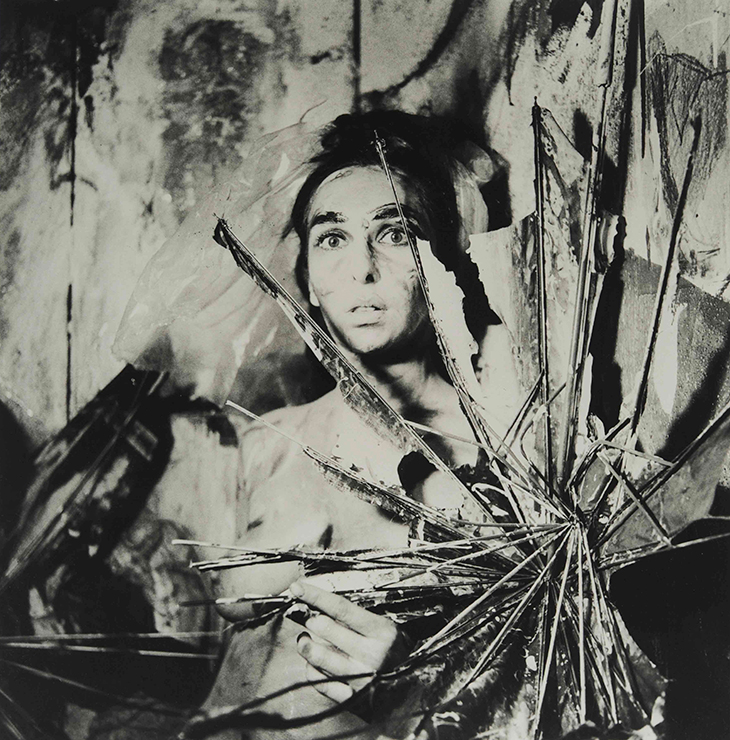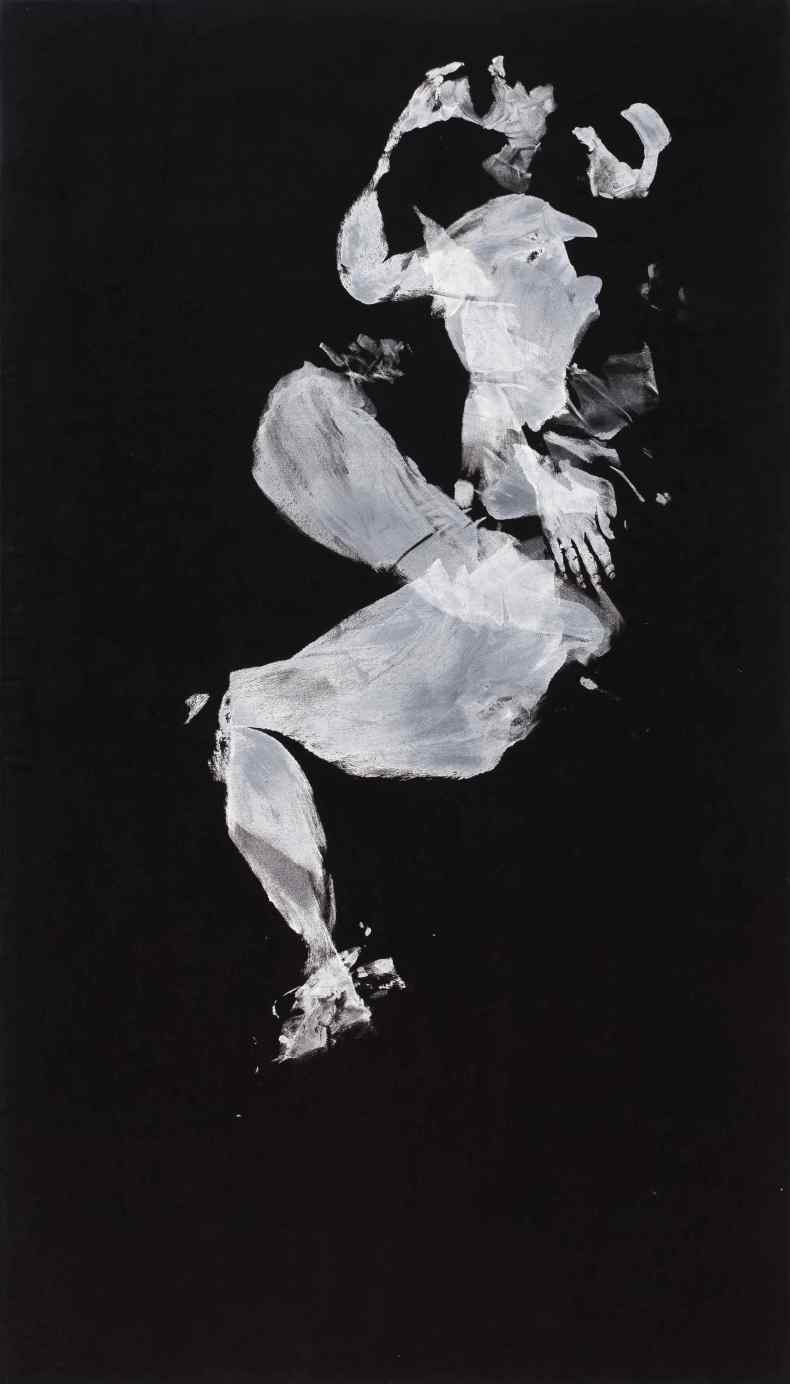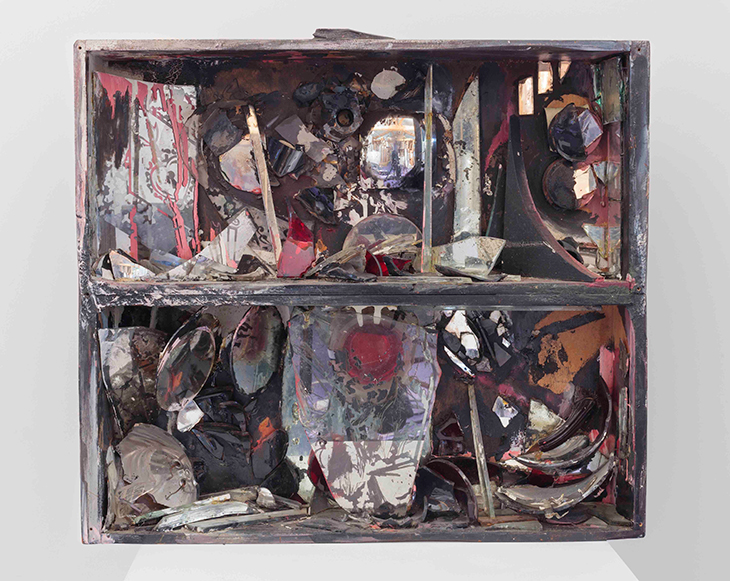Its title adapted from a major performance by Carolee Schneemann, this exhibition considers the influence of the artist – who died last year at the age of 79 – upon the generations who have succeeded her. Ten key works by Schneemann are presented alongside more than 60 pieces by 13 artists and art collectives, including Ragnar Kjartansson, Kris Lemsalu, and Sarah Lucas, to assess the legacy of Schneemann’s groundbreaking work – both in her explorations of new media such as performance, and in her use of the female body as artistic subject and material. Find out more from Muzeum Susch’s website.
Preview the exhibition below | View Apollo’s Art Diary here

From the series Eye Body: 36 Transformative Actions for Camera (1963/2005), Carolee Schneemann. Courtesy the Estate of Carolee Schneemann, Galerie Lelong & Co., Hales Gallery, and P.P.O.W., New York; © Carolee Schneemann
Schneemann’s Eye Body series of 1963 consists of 36 photographs, depicting the artist in a specially constructed setting, surrounded by broken mirrors and mannequins, with her body covered in various materials including grease and chalk. The series is recognised as the first of the artist’s ‘body actions’, marking her move away from the easel and towards a more performative approach – emerging from Schneemann’s desire to be herself both ‘image and image-maker’.

From the series Astrological Ways (2012), Aura Rosenberg. Courtesy of the artist and Martos Gallery, New York
Schneemann’s work marked a new departure for the representation of the female body in art. The German artist and photographer Aura Rosenberg has likewise focused on the body and sexuality in her work, creating provocative works based on images from pornographic magazines, as well as ‘body paintings’. For her Astrological Ways series, naked dancers covered in white paint imprinted their figures on a velvet canvas, in sexual positions associated with signs of the zodiac.

Controlled Burning: Fireplace (1963–64), Carolee Schneemann. Courtesy of the Estate of Carolee Schneemann, Galerie Lelong & Co., Hales Gallery, and P.P.O.W., New York; © Carolee Schneemann
Central to Schneemann’s approach across media was her identity as a painter. ‘Everything that I have developed has to do with extending visual principles off the canvas,’ she wrote – beginning with her early sculptural assemblages, made in homage to Joseph Cornell (to whom she was briefly an assistant). She coined the term ‘painting constructions’ in the 1960s to describe her materially innovative structures, often thickly painted and incorporating mechanical parts, or (as in her Controlled Burning series) singe marks.

I will be seven When we meet in Heaven (2016), Kris Lemsalu. Photo: Matthias Bildstein; courtesy Georg Kargl Fine Arts, Vienna
The Estonian artist Kris Lemsalu also works with a vast range of materials to construct sculptures that are by turns abstract and surreally figurative. I will be seven When we meet in Heaven incorporates clothing, wind chimes and hairdryers in a work both comical and menacing.











![Masterpiece [Re]discovery 2022. Photo: Ben Fisher Photography, courtesy of Masterpiece London](http://www.apollo-magazine.com/wp-content/uploads/2022/07/MPL2022_4263.jpg)
It’s time for the government of London to return to its rightful home